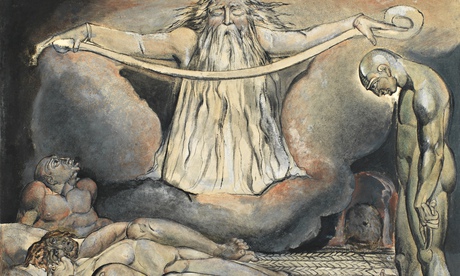As an exhibition of Blake’s paintings opens in Oxford, Philip Pullman reflects on how his poetry has influenced and intoxicated him for more than 50 years

Sometimes we find a poet, or a painter, or a musician who functions like a key that unlocks a part of ourselves we never knew was there. The experience is not like learning to appreciate something that we once found difficult or rebarbative, as we might conscientiously try to appreciate the worth of The Faerie Queene and decide that yes, on balance, it is full of interesting and admirable things. It’s a more visceral, physical sensation than that, and it comes most powerfully when we’re young. Something awakes that was asleep, doors open that were closed, lights come on in all the windows of a palace inside us, the existence of which we never suspected.
So it was with me in the early 1960s, at the age of 16, with William Blake. I came to Blake through Allen Ginsberg, whose Howl I read half aghast, half intoxicated. I knew who Blake was; I even had an early poem of his by heart (“How Sweet I Roam’d from Field to Field”); I must have come across “The Tyger” in some school anthology. But if Blake could inspire the sort of hellish rapture celebrated and howled about by Ginsberg, then he was the sort of poet I needed to read. Hellish rapture was exactly what I most wanted.
More
So it was with me in the early 1960s, at the age of 16, with William Blake. I came to Blake through Allen Ginsberg, whose Howl I read half aghast, half intoxicated. I knew who Blake was; I even had an early poem of his by heart (“How Sweet I Roam’d from Field to Field”); I must have come across “The Tyger” in some school anthology. But if Blake could inspire the sort of hellish rapture celebrated and howled about by Ginsberg, then he was the sort of poet I needed to read. Hellish rapture was exactly what I most wanted.
More
No comments:
Post a Comment